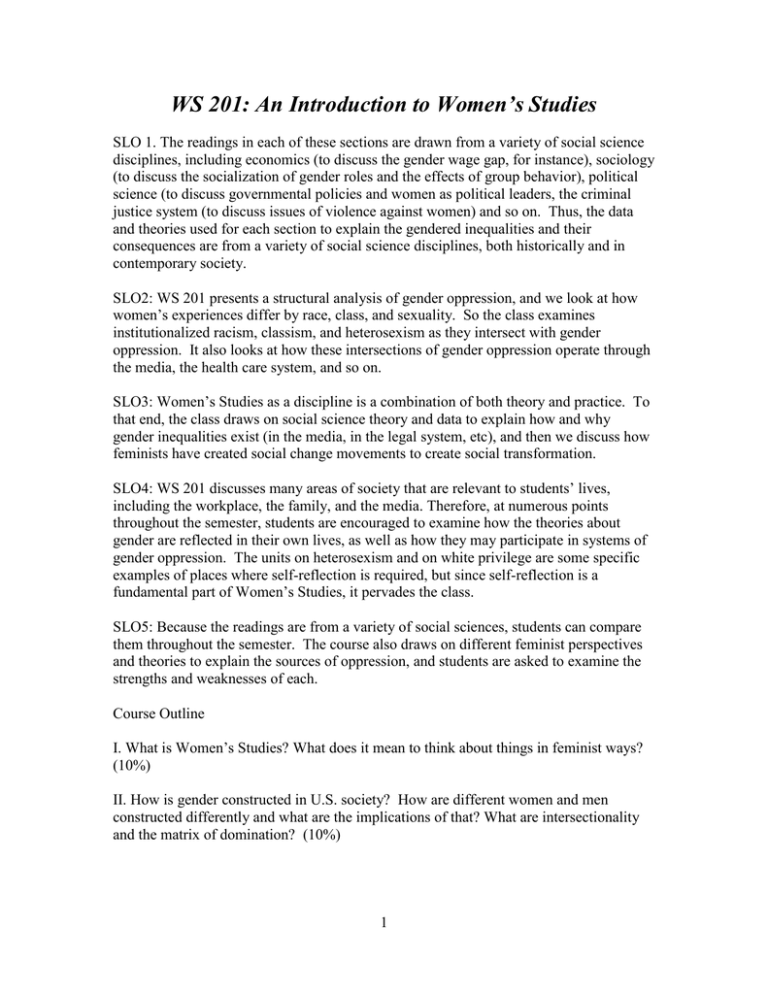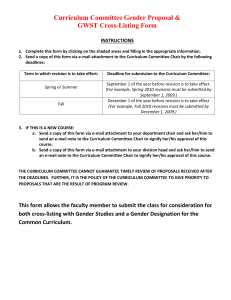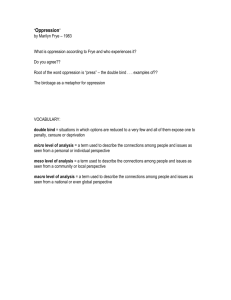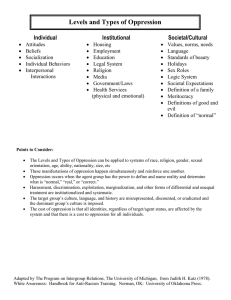WS 201: An Introduction to Women’s Studies
advertisement

WS 201: An Introduction to Women’s Studies SLO 1. The readings in each of these sections are drawn from a variety of social science disciplines, including economics (to discuss the gender wage gap, for instance), sociology (to discuss the socialization of gender roles and the effects of group behavior), political science (to discuss governmental policies and women as political leaders, the criminal justice system (to discuss issues of violence against women) and so on. Thus, the data and theories used for each section to explain the gendered inequalities and their consequences are from a variety of social science disciplines, both historically and in contemporary society. SLO2: WS 201 presents a structural analysis of gender oppression, and we look at how women’s experiences differ by race, class, and sexuality. So the class examines institutionalized racism, classism, and heterosexism as they intersect with gender oppression. It also looks at how these intersections of gender oppression operate through the media, the health care system, and so on. SLO3: Women’s Studies as a discipline is a combination of both theory and practice. To that end, the class draws on social science theory and data to explain how and why gender inequalities exist (in the media, in the legal system, etc), and then we discuss how feminists have created social change movements to create social transformation. SLO4: WS 201 discusses many areas of society that are relevant to students’ lives, including the workplace, the family, and the media. Therefore, at numerous points throughout the semester, students are encouraged to examine how the theories about gender are reflected in their own lives, as well as how they may participate in systems of gender oppression. The units on heterosexism and on white privilege are some specific examples of places where self-reflection is required, but since self-reflection is a fundamental part of Women’s Studies, it pervades the class. SLO5: Because the readings are from a variety of social sciences, students can compare them throughout the semester. The course also draws on different feminist perspectives and theories to explain the sources of oppression, and students are asked to examine the strengths and weaknesses of each. Course Outline I. What is Women’s Studies? What does it mean to think about things in feminist ways? (10%) II. How is gender constructed in U.S. society? How are different women and men constructed differently and what are the implications of that? What are intersectionality and the matrix of domination? (10%) 1 III. How are race and ethnicity defined in U.S. culture? How do racial formations create particular gender power dynamics for women of color? What is institutionalized racism and white privilege? (10%) IV. How are class relations played out within U.S. culture to create particular experiences for women of different classes? How do those relations fit into global capitalism and “First/Third world” hierarchies? (10%) V. How is sexuality constructed and performed? What is homophobia and compulsory heterosexuality? What does queer mean? What experiences do queer women face? (10%) VII. What role does popular culture play in constructing gender? How do media images relate to constructions of beauty and to gendered perceptions of body images? How can we be active and even resistant consumers of popular culture? (10%) VIII. How are experiences of sexuality gendered? How are constructions of sexuality related to other issues, such as reproductive issues? What kinds of health issues do women face that are uniquely gendered? (10%) X. Why do so many women experience sexual violence? What is rape culture? (10%) XI. What issues do women and men from marginalized groups face in the workplace? How are gender roles in the workplace related to gender roles in the family? How do different women and men experience those issues differently? (10%) XII. How have women protested and changed systems of gender oppressions? How can we produce social change? What kinds of action are possible at both individual and the structural levels? (10%) 2




